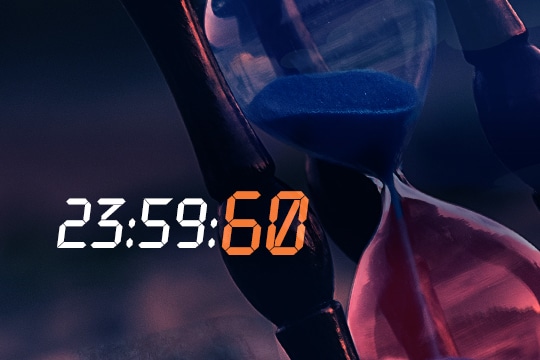
What is a Leap Second and How Does It Affect Me?
A leap second is a discontinuity in the world’s official timescale and is a risk for those developing and maintaining GPS/GNSS systems and/or managing a time synchronization deployment. The last leap second occurred on December 31, 2016.
This blog is to help you understand the leap second vulnerability and plan ahead for the next leap second so that your applications will continue to operate smoothly. A recent decision will keep the leap second around until at least 2023.
What Is a Leap Second?
Since the official definition of time is based on atomic standards, a leap second is inserted in the UTC time scale to keep it in step with the solar day — much like a leap day is used to keep the calendar in step with the seasons. A leap second can be added or removed, although historically leap seconds have only been added. A leap second typically occurs at the end of the day (UTC) on December 31 or June 30 and usually announced approximately six months in advance.
How Does a Leap Second Affect GPS/GNSS?
You probably know that time synchronization is fundamental to how GPS/GNSS works. The developers of GNSS knew that the system could not tolerate a discontinuity, so GPS/GNSS time is not affected by the leap second. But, since GPS/GNSS is used ubiquitously for time transfer, the message includes leap second information that all GNSS devices need to decode and properly handle. Orolia simulators can test GPS/GNSS devices compliance to the GPS interface specification for proper leap second handling and identify any detrimental effects of the leap second on the application. They also can perform similar testing on leap second handling in other GNSS systems. It is important not only to test the handling of leap seconds by the GPS/GNSS system, but also to test how that time propagates through a time synchronization deployment to the end system.
How Does a Leap Second Affect Time Synchronization?
Most time synchronization messages transmit time-of-day information in UTC, the official timescale, which includes leap seconds. The most popular network time synchronization protocols, NTP and PTP, have a mechanism to alert that a leap second is pending — but it is up to the computer operating system to manage it properly. Other timing signal protocols like IRIG, HAVE QUICK, and ASCII serial protocols may also transmit leap seconds or be affected by the occurrence of leap seconds further upstream. We have prepared a short video to help understand the issue of leap second handling in high precision computing applications.
Watch the Video:
Orolia time synchronization systems are fully compliant to best practices for leap second handling. The SecureSync system can even be used in a leap second test mode to easily test propagation through time synchronization deployments ahead of these scheduled events. For testing the capability of GPS/GNSS devices and systems to manage the leap second, any Orolia simulator can perform the most realistic test to identify any potential problem in advance of a leap second event.
Let us help you understand your risk for the leap second vulnerability.


